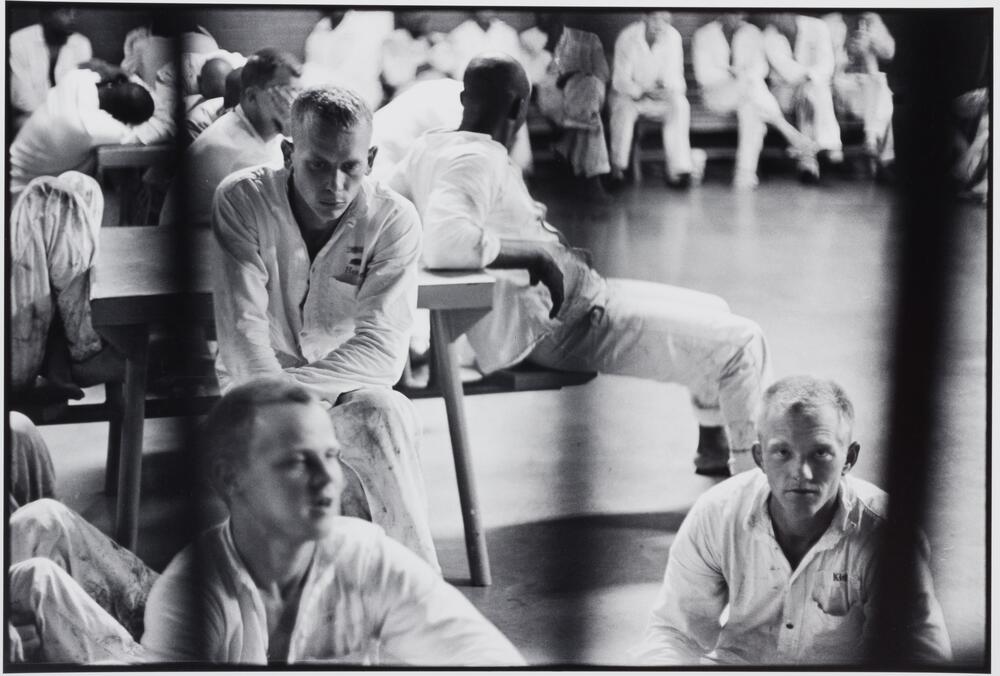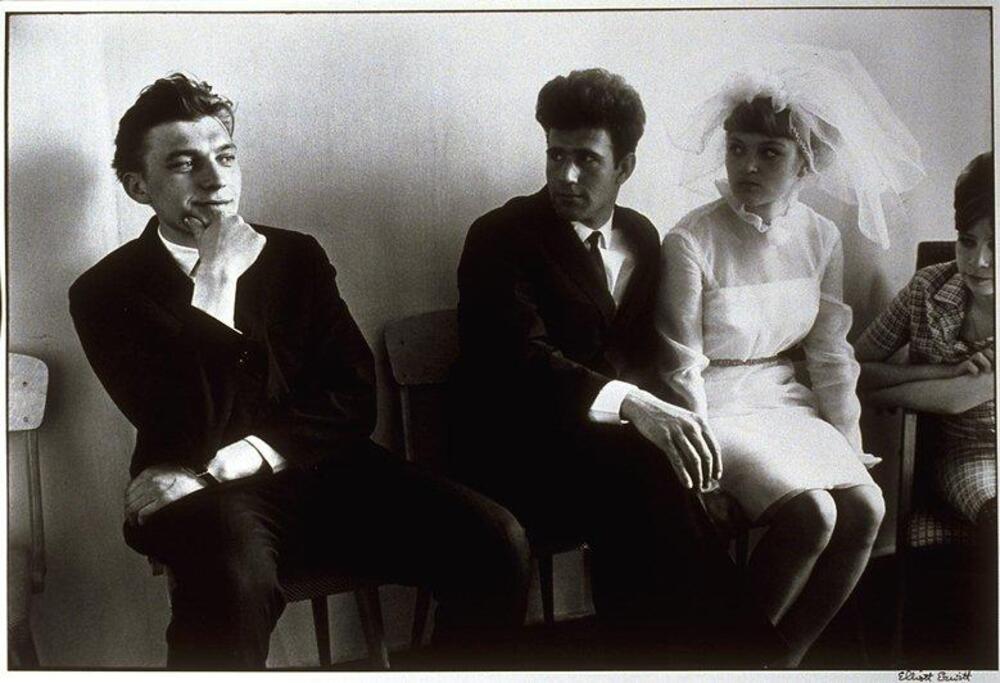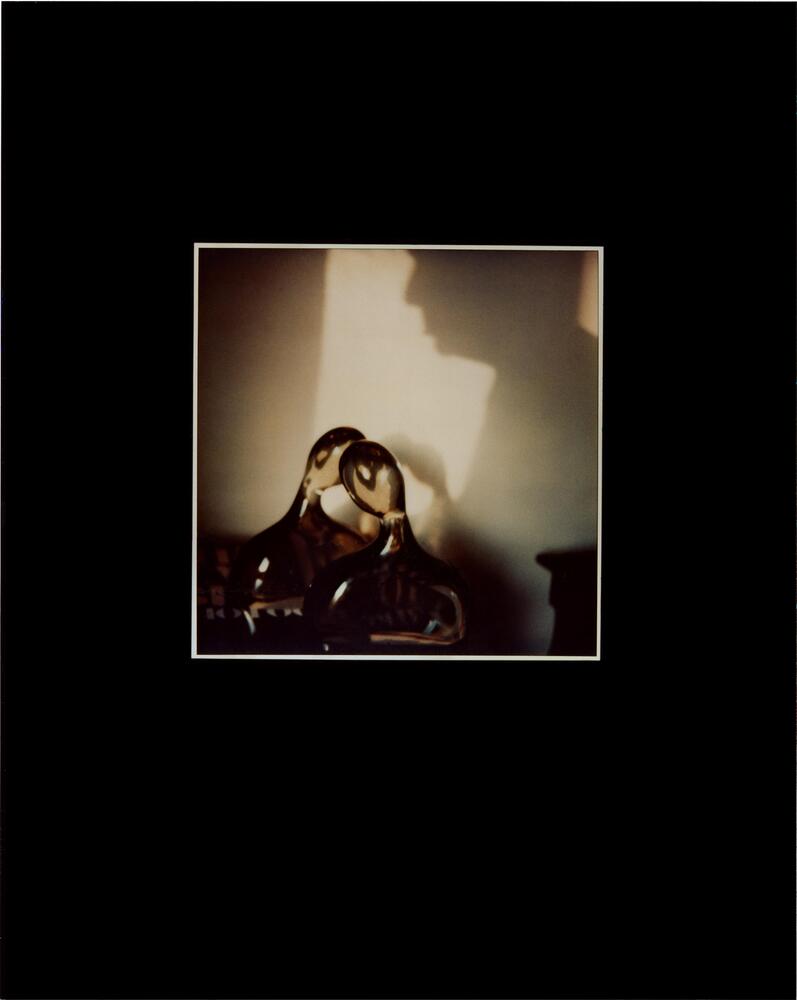Maintaining Eye Contact: The Power of Met and Unmet Gazes in Photography
by Evelyn Plonsker
Garry Winogrand set out to create his most ambitious yet controversial photobook titled “Women Are Beautiful” during the height of the second-wave feminist movement in the 1970s. Published in 1975, this celebration of female independence and sexual liberation is complicated by Winogrand’s often objectifying vision of his female subjects through the lens of his camera. This photograph taken at a nightclub in New York City highlights the dichotomy between objectification and liberation through the fixated gaze by the man dancing on the left directed at the female subject’s breasts as she dances freely and gazes off camera. The three men in this image are not given the same objectifying treatment by fellow subjects or the camera, as it also focused on the woman’s breasts. Winogrand suspends this beautiful woman in the male gaze showcasing how even feminist liberation is framed within the structure of patriarchal power.
Danny Lyon began his career as a politically impassioned photographer while still in undergrad, when he became the staff photographer for SNCC in 1962, an organization of the Civil Rights Movement. Lyon parted with SNCC in 1964 but used his experience gained creating powerful imagery for human rights to photograph the inhumane conditions of the Texas penitentiary system between 1967-68 in his 1971 collection, “Conversations with the Dead.” In this photograph, titled Day Room, the man seated on the right gazes up forlornly from his position on the floor, making eye contact with Lyon’s camera. This human connection between the subject and camera is severed by the metal bars between them that dominate the foreground of the photograph. The met gaze between camera and inmate works against the dehumanization of the prison system, exemplified by the identical white uniforms worn, and conjures a feeling of empathy in the viewer.
2 Comments
— by Ava Victoria Seaman (December 6 2022 @ 5:07 pm)
— by Charles Henry Gertner (December 13 2022 @ 9:51 pm)
0 Tags & 0 Keywords
Tags
Created For
K-12 EducatorK-12 Student
Museum Visitor
UMMA Docent
UMMA Staff
University Faculty
University Student
Rate this Resource
AVG: 0 | Ratings: 0
& Author Notes
All Rights ReservedLast Updated
December 2, 2022 11:49 a.m.Report
Reporting Policy





